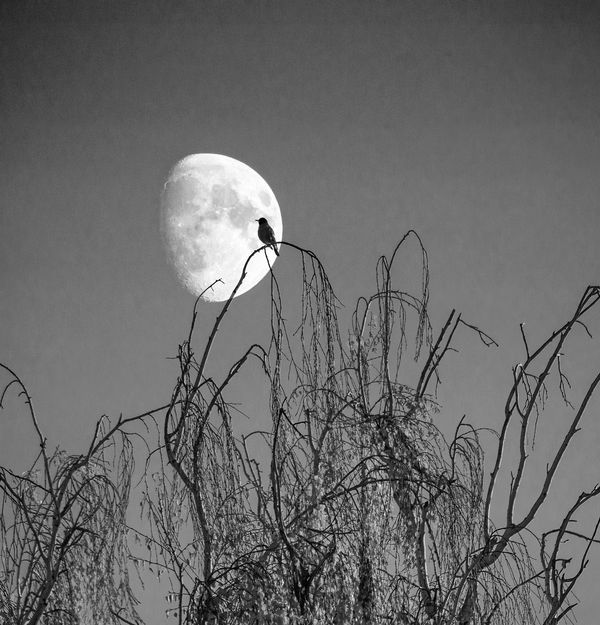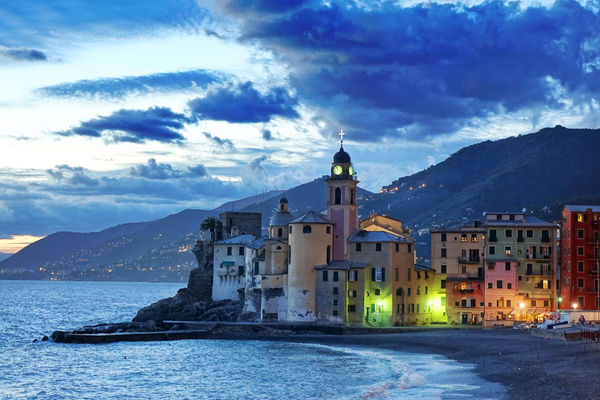Posts for: brucewells
Jan 22, 2019 21:20:04 #
markwilliam1 wrote:
I find it Very Useful to use the adjustment brush to change the exposure in the Develop Module of Lightroom. I shoot Raw and can use the brush to lighten (or darken) exposure in certain areas of my photos with Amazing results! Anyone else?
The auto-mask functionality of the brush is very good. If you aren’t familiar with what it does, do some reading. It’s quite powerful. The brush can give (as you say) amazing results.
Jan 22, 2019 19:02:08 #
abc1234 wrote:
Sounds like a solution in search of a problem. I ... (show quote)
Well stated! Thank you.
Jan 22, 2019 17:13:14 #
Blenheim Orange wrote:
UHH member Curmudgeon asked on another thread &quo... (show quote)
Thanks, Mike, for your explanation of your workflow. It seems you have thought through all aspects of things. I read the thread you referenced and initially thought someone was having a difficult time with a relatively simple process, but as it turned out, I really had to think about things as I read the posts. It isn't as straightforward as it might seem.
I use Lightroom for all my crops. I will usually crop to:
- Straighten a horizon
- Change the orientation of an image (i.e. in a landscape orientation, there may be persons I want in a portrait orientation image)
- Improve a composition
- Change aspect ratio
It depends upon the reason for the crop as to when I will perform the crop. For example, if the crop is to change aspect ratio, I'll make a virtual copy of the finished image in LR and crop to the required ratio. But, in a case where I want to change the orientation of the image or straighten the horizon, I'll do it before processing. I'm not sure there's a 'one size fits all' to the process.
Thanks again!! Good subject.
Jan 22, 2019 14:31:02 #
kenievans wrote:
I thought with this treatment and a little cropping this would look great as the cover to an Agatha Christie novel. Its always easier to be creative in PP when you have a great photo to work with.
 I like!!
I like!!Jan 22, 2019 14:26:28 #
lsimpkins wrote:
Bruce, I'm with you. I have added Auto as part of my Import on each batch of raw files. I think it does a good enough job that I can more readily decide which images to cull out and which deserve additional tweaks in LR and/or PS. The latter are my Picks that may end up in a book or printed for the wall, while the former are just deleted. Prior to Adobe's improvement of the Auto function, I had to spend more time just in the culling stage.
I'm quite surprised there are so many that do use the button. I ignored it for so many years. But, of course, it was just updated a few months ago, and it is much better. I believe your points to be spot on. Thanks for sharing!!
Jan 22, 2019 14:22:50 #
charlienow wrote:
Yes, it is a great starting point....usually make a few tweak from there...sometimes use without tweaks...i use elements 19 and start by batch processing a bunch of photos with auto...it saves a lot of time...
I think it does too, Charlie. Thanks for you viewpoint!
Jan 22, 2019 14:19:46 #
abc1234 wrote:
Bruce, you have opened a Pandora's box. I see two... (show quote)
I must admit, this revelation (of the AUTO button) came about as a result of my desire to spend more time in PS. I want to do that so I can learn it. A typical workflow for me right now is to start in LR, make any necessary crop, keywords, map and then hit the AUTO button. You're correct, in that, the AUTO button won't work every time, but it doesn't take long to tweak the AUTO adjustments, if need be. Then, I take the image to PS where I create a LEVELS layer to adjust the brightness, a CURVES layer to add contrast then a SATURATION layer to adjust color. From there, the image dictates what else I use, but it isn't uncommon to DODGE and BURN, each of which is on their own layer. I simply appreciate the range of adjustments that are available to me in PS, over those available in LR. I started with LR in version 3 and feel I became rather adept at using it, but it bothered me that I had PS sitting out there not being utilized. It still does, because after nearly a year of practice in PS, I still don't feel that I know it well enough. But, I do have a good starting base of knowledge that lets me venture out to try new things.
None of this should indicate that I don't use LR, for I do. When I work with my images, LR is the first app opened and it is from there that I work. And I use the sharpening tools in LR, for I believe them to be better, and some of the other LR tools (i.e. the graduated filters) just work easier than in PS.
I want to continue my quest of learning/using PS, simply for the knowledge/expertise I can gain about the tool. But, know that I appreciate your insight and your words of wisdom. You aren't wrong. It's just my different impetus involved. Thanks.
Jan 22, 2019 10:15:58 #
Thanks, Linda!! Fun stuff.
Jan 22, 2019 09:57:48 #
IreneAC wrote:
This photo was taken in 2016 while visiting the wo... (show quote)
Nice capture! Hope my processing has done it some justice. I tried to bring the buildings out a bit, for as someone else said, the buildings have some nice color. I also wanted to tone down the sky in the left half of the frame. A bit of dodging to bring some detail out of the mountain behind the buildings. A bit of dodging of the wave breaking I thought led the eye a bit. Fun stuff.
Jan 22, 2019 07:50:40 #
melueth wrote:
Wow - great info, Bruce. I've never bothered with that, just assuming it wouldn't produce what i want, but i'll give it a go. Thanks!
Marylea
Marylea
Well, that's where I had been. It was quite the revelation to me how quickly it yields good basic adjustments. Give it a try and let us know.
Jan 22, 2019 07:48:58 #
bsprague wrote:
I've been experimenting with a custom preset that uses Auto with a touch of sharping, clarity and noise reductions added.
Great idea, Bill. Let us know your results.
Jan 21, 2019 22:19:31 #
AzPicLady wrote:
I have a preset that works well. But sometimes I find myself fighting with an image. In that case, I hit "reset" and go to "auto."
It yields, what seems to be, a point we’re mostly comfortable with. Appreciate your input.
Jan 21, 2019 22:03:20 #
bsprague wrote:
I use it a lot. The code behind it was rewritten a few months ago. It went from not so good to quite useful.
I knew you work in LR, Bill. It’s good to see your endorsement of the tool. Thanks for jumping in!
Jan 21, 2019 20:57:22 #
Bunkershot wrote:
I'm in your camp Bruce. Start in LR, hit the Auto button, fine tune that adjustment, move to PS and make further changes that can't be done in LR, then back to LR for printing...
I appreciate your confirmation that I’m not way out in left field! It seems to be a great way to work. Thanks for your interest.
Jan 21, 2019 20:52:47 #
Curmudgeon wrote:
I always start with the Auto button. Scott Kelby told me to (in his book). It does not eliminate your continue pp but in my estimation it provides a good starting point.
Scott is a great resource! I typically follow him, but I missed that one. Your points are spot on! Thanks for sharing,

